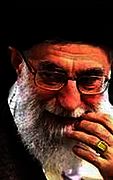Khamenei’s Contradictory Policies
» Help to Release Prisoners or Ordering their Arrest?
While according to official figures some 800,000 people are imprisoned annually in the Islamic republic of Iran, the office of supreme leader ayatollah Khamenei has announced that he has allocated 120 million Toman to help release prisoners.
“Coinciding with the Golrizan festival to help free destitute prisoners in Iran, the supreme leader of the Islamic revolution provided 200 million Rials to this fund,” ayatollah Khamenei’s website wrote.
In recent years, reports about ayatollah Khamenei’s financial assistance to prisoners and other needed individuals, have been published in Iran first by his own office and subsequently by state news agencies. But these reports have been countered with news and accounts about the supreme leaders’ orders to arrest political and civil activists as well.
According to reports and statistics provided by judiciary officials, “800,000 people are imprisoned every year” in Iran and according to Gholam-Reza Asadollahi, a member of Majlis’ Budget Planning committee “officials from the prison administration agency are currently pursuing ways to meet their budgetary needs for building new prisons.”
At the same time the appointees of the supreme leader at Iran’s judiciary have been saying since the beginning of the year that the judiciary desires to implement a policy of reducing prisoners. In this regard, the head of Iran’s judiciary ayatollah Sadegh Larijani announced last month that the country’s policy was not to use prison as a form of punishment as much as possible. He added that a specific directive had been issued in this regard.
Another judiciary official cleric Ibrahim Reyisi while visiting the newly created “Greater Tehran” prison on the old road to Qom and the new labor camp in Fashafooie, announced that officials were trying to find ways to reduce the prison population of the country. He also asked judges to pursue a policy of reducing the number of prisoners, a goal that he said is supported by the head of the judiciary.
A Dual but Contradictory Policy
Prior to this, ayatollah Khamenei had ordered the release of a number of prisoners and accused individuals. For example last year he had ordered that Mohammad Sharif Malekzadeh, a former foreign ministry deputy and the head of the organization for Iranians outside the country, who was a close associate of President Mahmoud Ahmadinejad, who had been arrested on charges of financial corruption, be released. Tehran’s prosecutor Abbas Jaafari Dolatabadi subsequently announced that Malekzadeh had been pardoned and released from prison. He pointed out that the file had been ready to be sent for trial but was suspended on ayatollah Khamenei’s order.
Others too had been pardoned earlier as well. For example Vice-president Mohammad-Reza Rahimi who had been implicated in the Bimeh Iran embezzlement trials had also been pardoned by the supreme leader.
But despite these pardons and releases, the leader is also on record for ordering the massive arrests of 2009 which came about because of the unrest following the controversial presidential elections of that year. Some of those arrested then continue to be in prison and serving their terms. Mohammad-Hossein Saffar Herandi, currently ayatollah Khamenei’s advisor in the Revolutionary Guards force and a member of the state expediency council that in theory monitors the supreme leader had earlier publicly said that ayatollah Khamenei had issued orders for the arrest of critical political activists.
Ayatollah Khamenei is also on record for ordering the closure of the Kahrizak prison because of its unacceptable living conditions. At least four individuals are reported to have died in that prison because of official mistreatment and torture.


